Objective:
- Analyze the scaling impact of population size on urban form and the challenge of accommodating the growing number of people in a more efficient and sustainable way
Case:
- China, EU, US, India and Brazil
Methodology:
- Mean interbuilding distance: $D_i = \frac{128}{45\pi}(B_i A_i S_i E_i)^{1/2}$
- City shape: $E_i = \frac{\pi^{1/2}M_i}{2(B_i A_i)^{1/2}}$
- Sprawl of a city: $S_i = \frac{45^2 \pi^{3/2}D_i^2}{2^{13}M_i ((B_i A_i)^{1/2})} = \gamma\frac{D_i^2}{M_i (B_i A_i)^{1/2}}$
- Polycentrism index: $\phi_i = \frac{1}{v_1} \sum_k kv_k$
- BASE model: $B_i = \alpha P_i^{\beta}$
Data Source
Findings:
- The number of buildings within a city grows with population, but decreases slightly with size
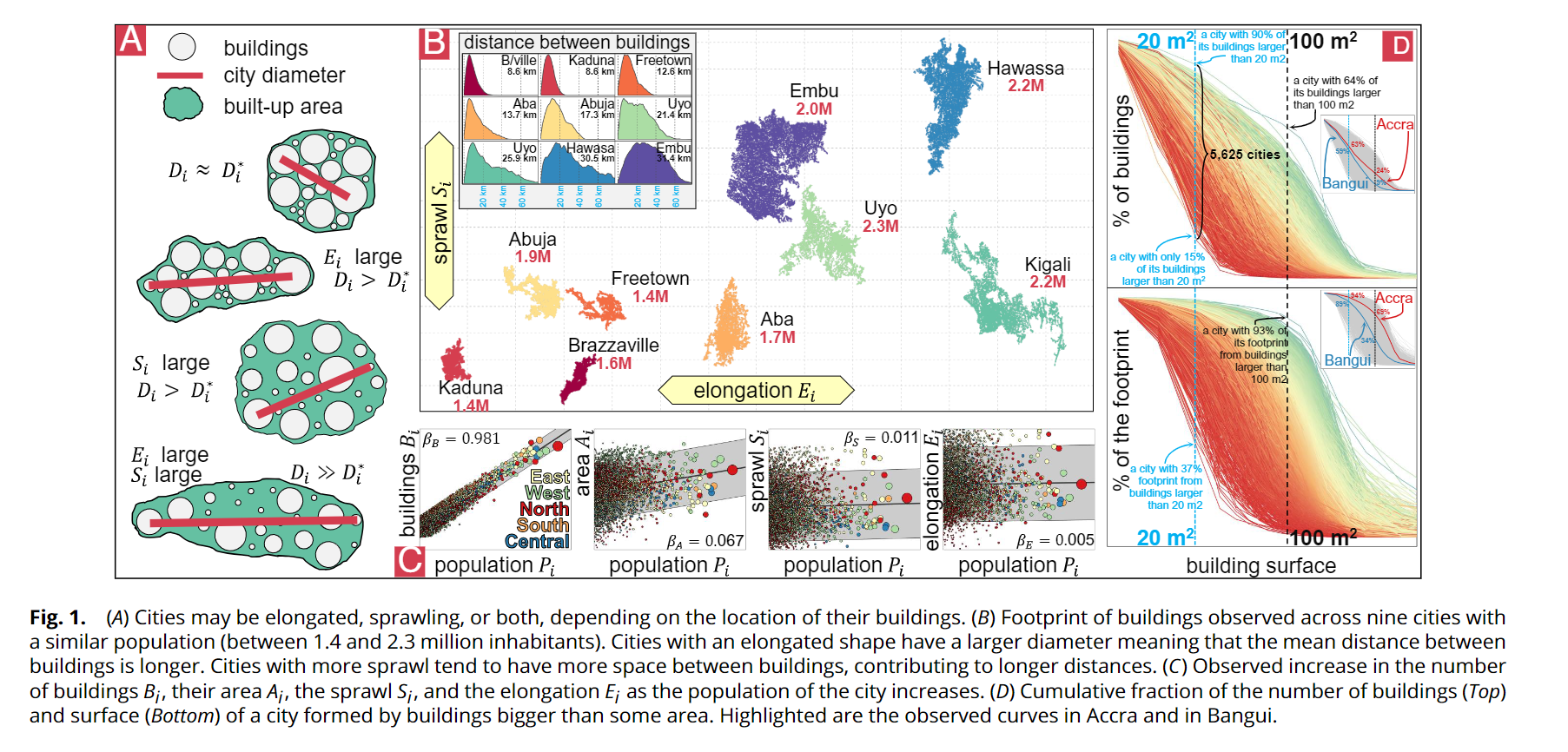
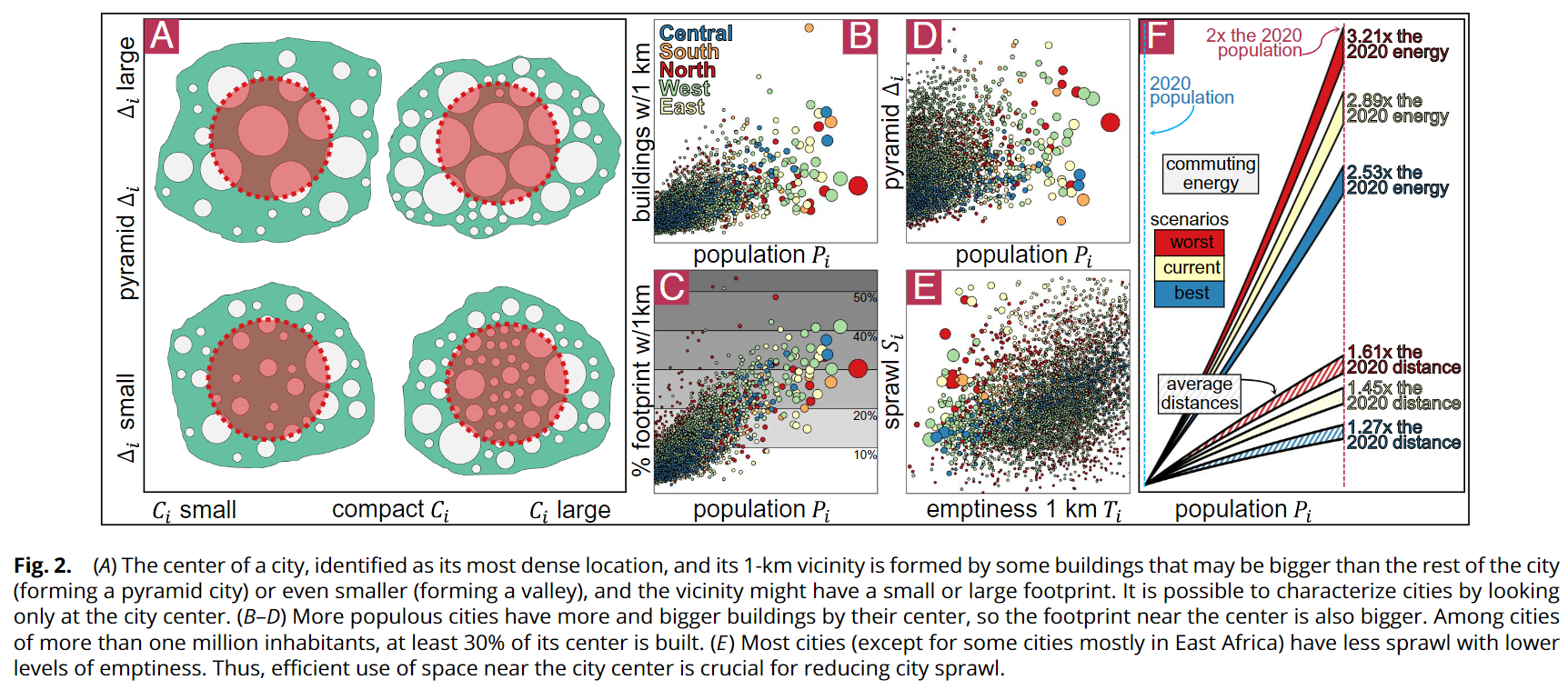
- Small buildings (68.5%), and big buildings represent a large part of the constructed surface of a city
- Buildings average size scales with the city’s population
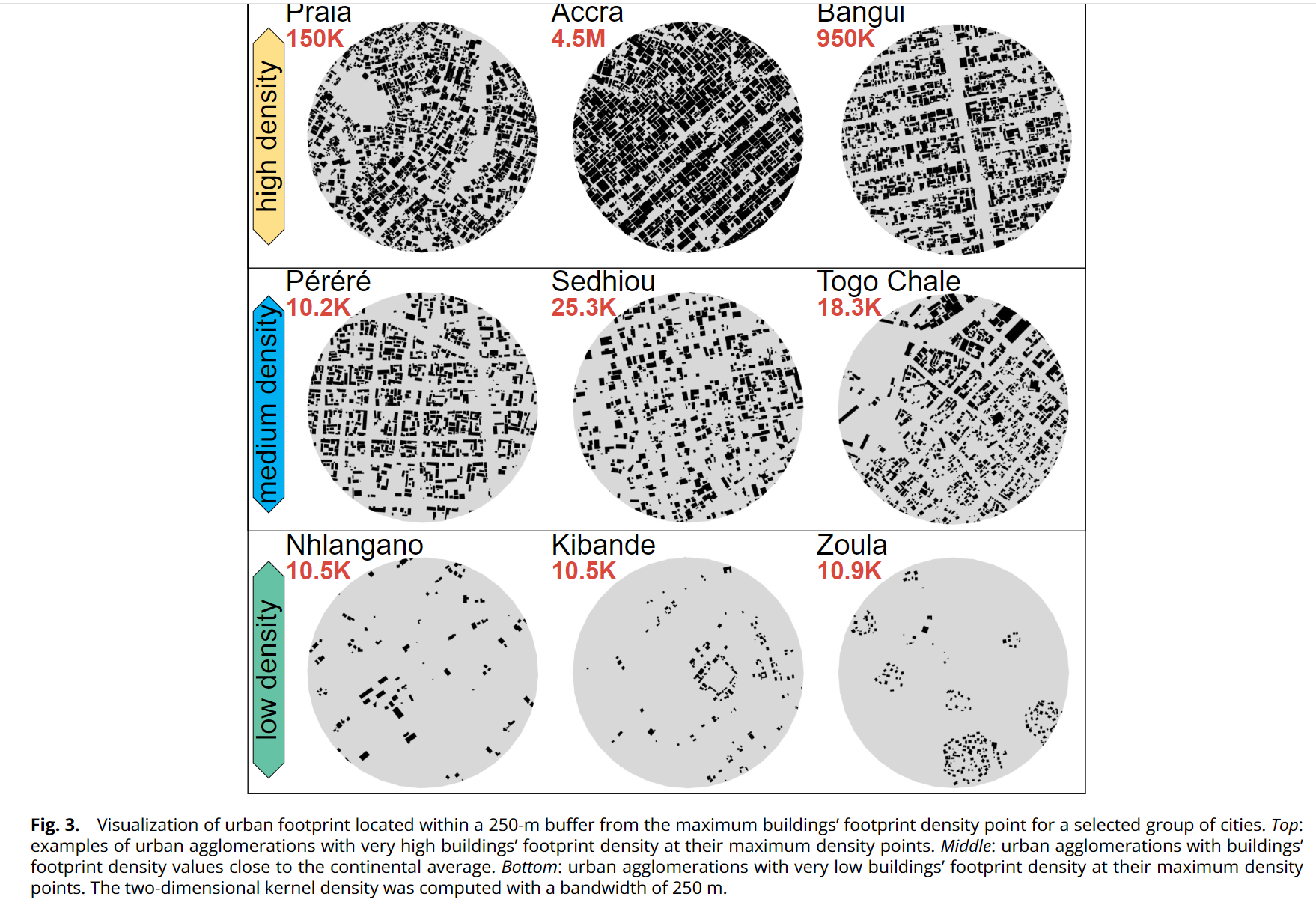
- A city with ten times the population will demand 34 times more energy than transport
- The densest point in a city with more than 1 million people has 30 or 40% of the surface built up, as opposed to small towns with less than 100,000inhabitants (less than 10%)

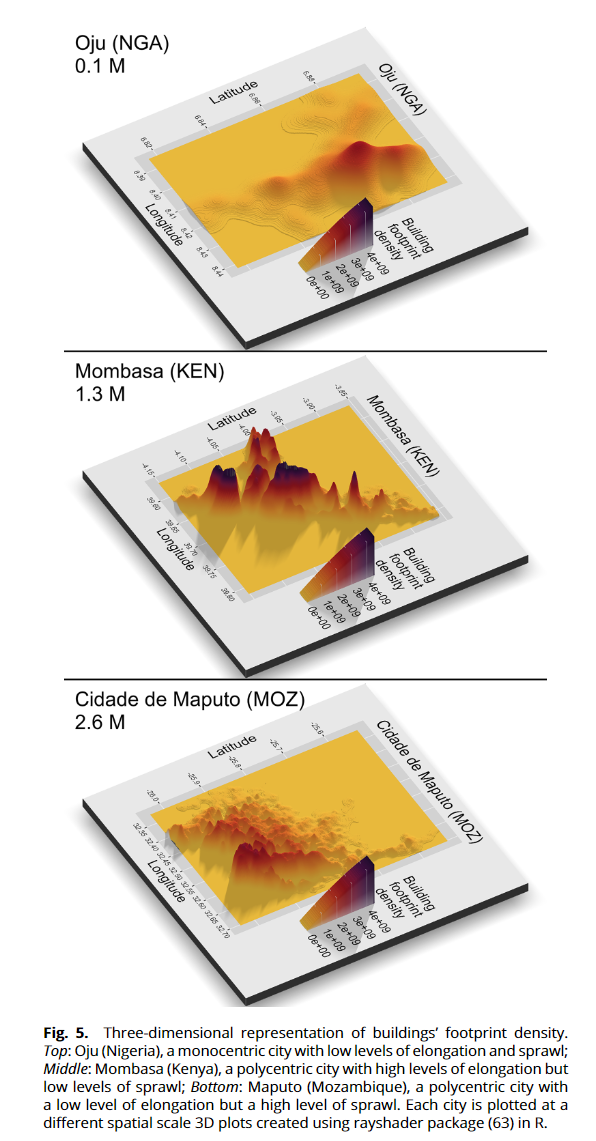
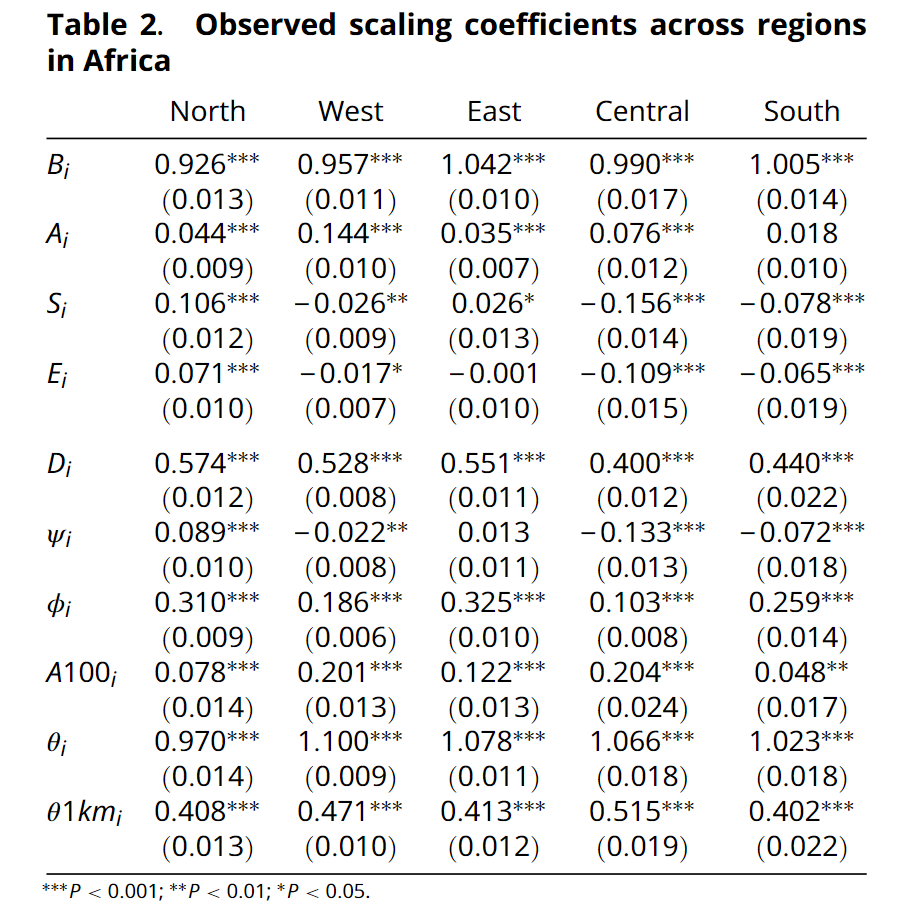
Coding Reference:






